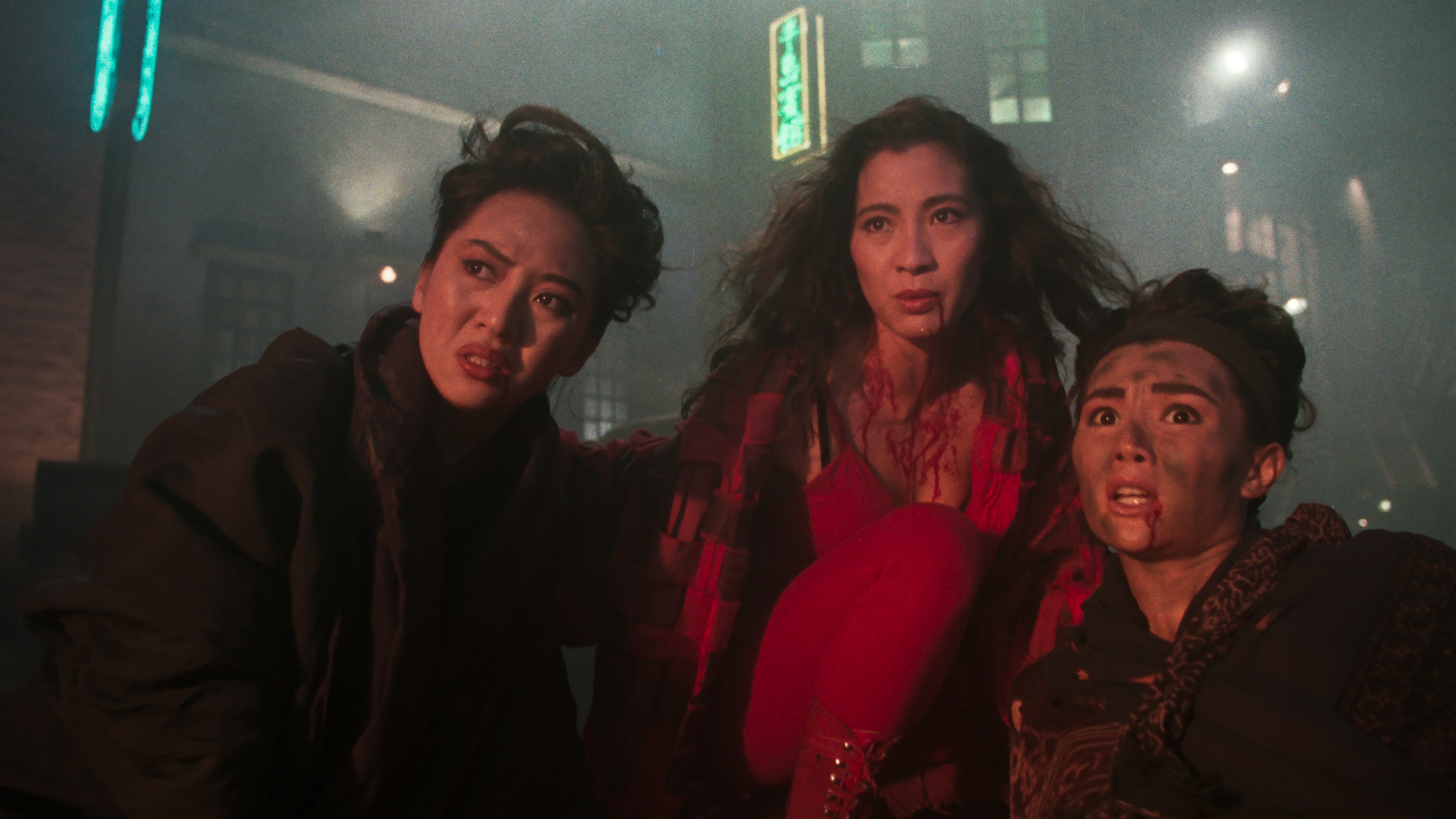Behind the Scenes of LUMI's Action-Packed All-Nighter
30 November 2024
Join LUMI Programmer Molly Qualter as she explores the exciting line up of high-octane films included in LUMI's All-Nighter.

Still from The Heroic Trio.
When you think of action films, figures like Tom Cruise or Bruce Willis might leap to mind. Yet the truth is, the action genre, so synonymous with male bravado, was shaped and enriched by women.
As early as 1905, women were leaping from trains, scaling buildings, driving cars, and performing
their own stunts. Fast forward nearly 120 years, and the handful of stuntwomen in the SAG-AFTRA
registry, paired with the still frequent use of male stuntmen in wigs, suggests the industry hasn’t
caught up with its own history. If women helped define action cinema, why are their contributions
still overlooked?
their own stunts. Fast forward nearly 120 years, and the handful of stuntwomen in the SAG-AFTRA
registry, paired with the still frequent use of male stuntmen in wigs, suggests the industry hasn’t
caught up with its own history. If women helped define action cinema, why are their contributions
still overlooked?
This question frames our LUMI ACTION-PACKED ALL-NIGHTER, a celebration of
underrepresented groups in action, past and present. The juxtaposition of silent-era films like Algie
the Miner, The Purple Mask, The Hazards of Helen, and A Daughter of the Law with contemporary
films like Polite Society, The Heroic Trio, Fallen Angels, Foxy Brown, and Monkey Man. Together,
these films highlight how women and underrepresented groups have continually redefined the
genre, challenging narratives that confine them to the margins.
Algie the Miner (1912), directed by Alice Guy-Blaché. Who is considered cinema’s first narrative
filmmaker, crafted stories that were as progressive as they were entertaining. Algie the Miner
centres on an effeminate man whose journey westward subverts conventional ideas of masculinity.
While Algie’s care for his rugged partner Big Jim could be read as queer subtext, the film also
highlights a softer form of masculinity, a radical idea then, and arguably even now. Guy-Blaché’s
removal from mainstream film history reflects a broader pattern of erasure, yet her work continues
to resonate as a testament to feminine and queer agency in the early days of cinema and now.
Grace Cunard, the star and writer of The Purple Mask (1917) and A Daughter of the Law (1921),
was another trailblazer who refused to be confined by expectations. Known for her daring roles as
jewel thieves, journalists, and outlaws, Cunard’s characters were as unconventional as her own
career. In The Purple Mask, she becomes a Robin Hood-esque figure, while in A Daughter of the
Law, she takes on the role of a Prohibition-era Internal Revenue officer tracking moonshine
smugglers. Yet even as she performed her own stunts and penned her own scripts, Hollywood
gossip columns reduced her achievements to rumours of romance with her co-star Francis Ford
(Older brother to director John Ford), reinstating a familiar example of how women’s
accomplishments have often been overshadowed.
Similarly, The Hazards of Helen (1914–1917) turned the "damsel in distress" trope on its head.
Each episode saw Helen, played first by Helen Holmes and later by Helen Gibson, thwarting
disaster with superhero like stunts. Whether racing on horseback or hurtling down train tracks on a
motorcycle to avert catastrophe, Helen was no passive victim but an active, daring hero. These
serials, dismantled narratives and showcased women as capable and resourceful.
The significance of these early works becomes even clearer when viewed alongside modern films.
From Pam Grier’s powerhouse performance in Foxy Brown to Michelle Yeoh’s martial arts mastery
in The Heroic Trio, these films continue the legacy of women claiming space in a genre that often
resists their presence.
Yet despite these triumphs, women-led action films remain the exception rather than the norm. The
history of cinema is riddled with omissions, and the rediscovery of figures like Alice Guy-Blaché
and Grace Cunard force us to confront the biases that still shape film history. What might
Hollywood have looked like if these women had been credited and celebrated from the start?
Would we still be stuck questioning why female stunt performers and directors remain so
underrepresented?
Highlighting these silent films, is more than a retrospective—it’s a reclamation. By pairing silent-
era pioneers with contemporary icons, we are bridging the gap between past and present,
illuminating a continuum of feminine strength and agency in action cinema. These films entertain,
inspire, and provoke. They challenge us to rethink not only who gets to be the hero, but also who
shapes the story.




